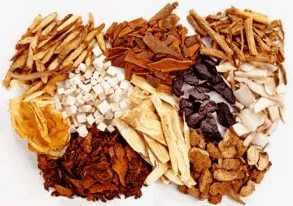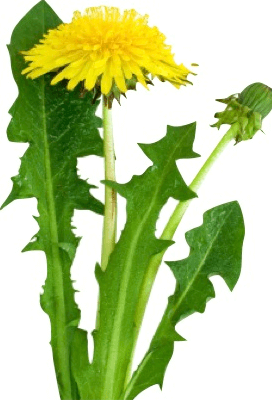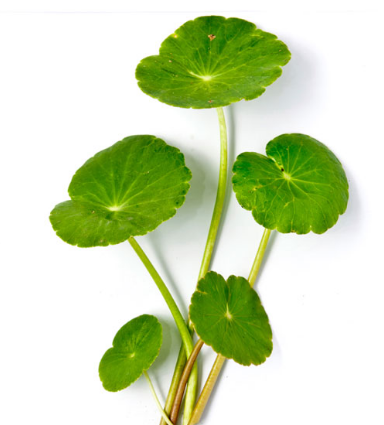History of Herbs
The history and romance of herbs is wreathed in the dim mists of time to intrigue and enchant us. Herbs are mentioned in the Bible many times in both the Old and New Testaments. They also appear in Greek mythology, fennel being an example. Legend has it that the god Prometheus went up to heaven holding a hollow fennel stalk in which he concealed some of the sun’s fire to bring back to earth for man’s use.

From the time the written word was set down on papyrus, or incised into wax or stone tablets, the use of herbs in countless different ways was reported. Most of our ancestors’ knowledge came from pure instinct, as a result of living close to nature, and it is interesting to learn that today’s scientists are proving much of this lore to be correct. Many of these old methods of healing are gaining new followers and are a continuing part of natural therapeutics.
The ancient Egyptians and Greeks were the first people known to write down in technical terms their knowledge of herbs, following their scholarly, systematic observations of plant life. Indian and Asian civilizations, which were very advanced at an early time, also knew the value of plants that grew of on their continents.
In Egypt, herbs were used extensively about 2700 B.C. They grew abundantly in the rich soil by the River Nile and were concocted into potions and ointments and, together with rare and exotic spices, were used for embalming the dead. Medical schools began to flourish in Egypt and it is thought that the Greek Physician Hippocrates was a student at one of these schools. Another great Greek physician, Dioscorides, who lived during the reign of Nero, was the author of a herbal material, and it is said that for a thousand years afterwards, doctors in the known world used his remedies for healing the sick.
Pliny the Elder (A.D. 23-79) , who perished during the eruption of Vesuvius which destroyed Pompeii, and his nephew , known as Pliny the younger (A.D.62c-113), were Roman historians who left detailed records of life in their times, including many treatises on herbs; however , it is thought that the elder Pliny was the author of the works on herbs. He is still quoted today in herbal encyclopedias.
At historical Ephesus, herbs can be seen growing abundantly and flowering amongst fallen columns and between paving stones; there is even a small basil plant flourishing bravely in brown, hard, inhospitable ground. This landlocked city of white marble ruins, extensive and preserved enough to captivate the imagination forever, lies glittering in the sunlight as it has done for several thousand years. It was once a seaport where, legend says, Antony and Cleopatra disembarked from their vessel and walked along the lovely streets. Later St Paul visited Ephesus, and it is claimed that the Virgin Mary spent the last years of her life nearby. She was taken there by St John after the Crucifixion for protection.
In Crete, among the green slopes of Knossos, stepping through some of the partially restored and originally enormous Minoan Palace, where Theseus slew the fearsome Minotaur in the Labyrinth, is an immensely elegant azure- blue monkey, sitting with one “hand” poised above a stylized saffron flower. Apparently monkeys were trained to pluck the orange stigmas form the heart of the saffron crocus because of their dexterous fingers and very long nails. Saffron was valued for the delicate flavor and colour it gave to food (it is highly prized today for the same reason), and is golden-yellow dye was used to colour cloth and tint the hair.
In early England it is believed that there were ancient herbal writings which were destroyed during the Danish invasions. Old manuscripts on the subject, now in safe- keeping in Britain, are the 10th century Leech Book of Bald and the Saxon translations of the Herbarium of Apuleius. These documents bear out the knowledge that the use of herbs dated from the earliest times. Certain plants were in essential ingredient in charms, spells and ceremonies, as well as in remedies, and some herbs in particular were believed to ward off treacherous water elves, “the flying venom”, trolls and evil spirits. Other herbs were used in remedies, in food, and for dyeing.
When the conquering Romans came to Britain and settled for two hindered years or so, they brought with them the herbs that were essential in their food and medicines. We think of these plants today as being indigenous to Britain but they are actually native to the Mediterranean. Some of these are oregano, marjoram, thyme, sage, rosemary, balm, bay trees, fennel, savory and mint.
Herbs were continually being introduced by newcomers: the invading Normans would have seen to it that their diet in a new land still contained their favourite herbs and that their medicine boxes held the “physics” that they knew were effective. Various foreign princesses who became queens of England were influential in importing other; the countess of Hainault, mother of Philippa, wife of Edward III, sent her daughter a famous manuscript dealing with the virtues of herbs. People who were traveling and adventuring other countries also found new and diverse plants to bring home.
In the Middle Ages monks cultivated herbs intensively and made many advances in their cultivation and use, discovering many more properties, which they recorded. It is well known that the first liqueurs were concocted by monks as potent medicines. A small glass (the forerunner of the liqueur glass), containing the carefully blended precious plant essences, would be administered to the patients who came to the good monks to be healed in body as well as in soul.
Later were to come other great herbalists like john Gerard (16th century) , john Parkinson (17th Century), and Nicholas Culpeper (17th century). Other herbalists, gardeners and gourmet have set down their own delightful and helpful observations during the following three hundred years.
Wherever the human race has traded or settled, herbs and spices have been woven into history. It is amazing to consider the ability to herbs to spread and grow in remote corners of the ancient and the modern world.
The Pilgrim Father took herbs with them to America. Many were already indigenous to the new land, including bergamot, used by the Oswego Indians as a curative herb. The new settlers soon found “Oswego Tea” a remedy for sore throats and colds, and its soft fragrance made a delicious herbal tea. “Johnny Appleseed”, as he was called, helped spread many herbs form his home to families in the new land.
The first white settlers in Australia brought with them herb seeds to grow in a new and strange continent to use as flavoring for their food, as medicines, and to make into sweet bags and potpourri to perfume rooms and closets. Stories abound of grandmother’s favourite herbal remedies and these pioneers were not afraid to experiment with some of the native Australian flora, such as ti-tree leaves, which it is said they used for making tea, the lemon- scented variety being highly favored. People also learned much in those early days from the Aborigines. But for many years the popularity of herbs declined and those which were once in everyday use became obscure and their names strange. There are exceptions of course, like parsley, mint, sage, thyme, marjoram and chives, and in the last twenty years there has been a remarkable world- wide resurgence of interest in herbs.
The Aboriginal people knew about their own wild plants and how to apply them for various needs but most Australians know very little about these plants. However, an excellent book by A.B. and N.W. Cribb, published by Collins, called Wild Medicine in Australia, provides a wealth of information on a large range of native species that have been used by the Aborigines and early European settlers to treat a number of diseases.
Herbs have been defined under several different headings; physic or medicinal; flavoring or culinary; fragrant, and those used for dyeing. In many countries they grow as wild as weeds along hedgerows and wasteland. Once a weed has become useful it reaches the status of being called a herb. Physic herbs were once called “simples” because specific ones contained the effective components for remedying simple ills.
I fragrant or “sweet herbs” were those whose aromatic leaves and flowers were strewn on floors to sweeten the air as they were trodden on (add to keep away unwanted insects and vermin). They were picked and dried for a potpourri blend, for sweet bags, and for incorporating into numerous other household recipes in the still- room of the mistress of the house.
Herbs and some vegetables were also important for dyeing cloth.
“Pot herbs” were more like an early form of vegetable. They were used n cooking for the flavor and nourishment in their leaves roots and stems.
“Salad herbs”, eaten raw, were usually leafy and included many chopped up culinary herbs.
Herbs contain their own particular properties and essences and some medicinal plants if taken in large quantities can be poisonous. If prescribed in the correct proportions and mixtures by a trained practitioner they can be quite effective. Many chemical medicines today have been derived, then synthesized, from herbs. The sedative drug Valium is a synthesized substance found in the root of the herb valerian, long esteemed for its calming and soothing effect. The pretty foxglove (Digitalis Purpurea) is a plant which is a heart drug and can be fatal if the leaves are eaten as a salad. A derivative of foxglove is today a chemical orthodox drug and is prescribed with safety by doctors for certain heart ailments. Medicinal plants are beyond the scope of this book, which deals mainly with culinary and salad herbs which are tasty and healthy giving. When eating them, or taking them as a tea, it is wise to very them and sometimes blend them, and not eat or drink only one herb many times a day, every day for months , unless prescribed by a professional. There are very reputable herbal remedy companies that make tablets and medicines, teas and ointments, which have given countless numbers of people reliefs from distressing illnesses.






